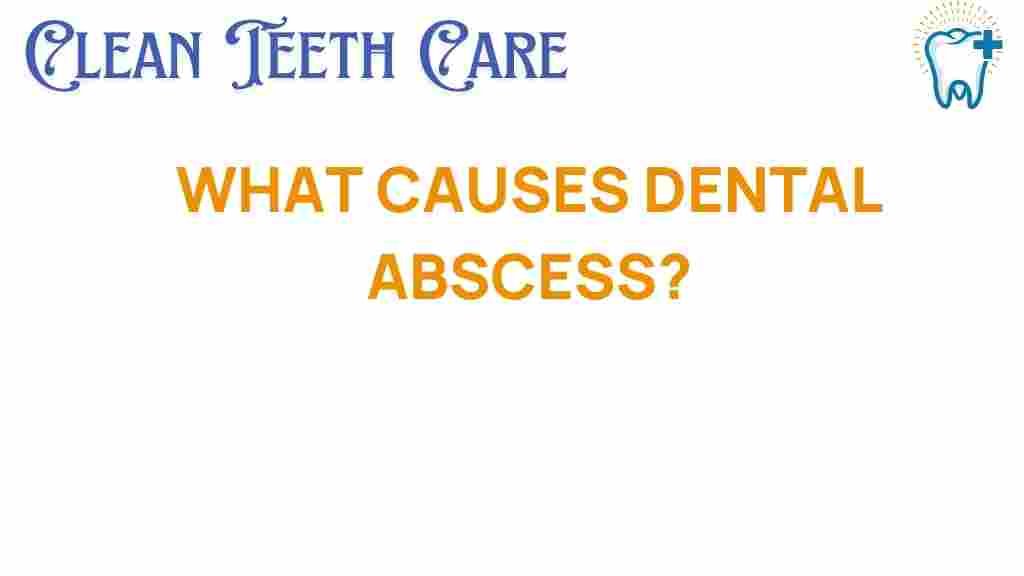Unveiling the Mystery: What Causes Dental Abscesses?
Dental abscesses are a common yet often misunderstood oral health issue. They occur when bacteria infect the dental pulp or surrounding tissues, leading to the formation of pus and severe pain. Understanding the causes, symptoms, treatment, and prevention of dental abscesses is essential for maintaining good oral health and avoiding serious complications. In this article, we will explore everything you need to know about dental abscesses, from their origins to effective treatment options.
What is a Dental Abscess?
A dental abscess is a localized collection of pus associated with a tooth. It usually results from a bacterial infection that can occur in different parts of the tooth, including:
- Periapical Abscess: This type occurs at the tip of the tooth root and is often due to untreated dental decay.
- Periodontal Abscess: This occurs in the gums and is often linked to gum disease.
Dental abscesses can lead to significant pain, swelling, and other complications if left untreated, making understanding their causes and symptoms critical for effective dental care.
Causes of Dental Abscesses
Dental abscesses are primarily caused by bacterial infections. Here are some of the main causes:
- Poor Oral Hygiene: Inadequate brushing and flossing can lead to plaque buildup, which contributes to decay and infections.
- Tooth Decay: Untreated cavities can allow bacteria to penetrate the tooth, reaching the pulp and causing an abscess.
- Gum Disease: Periodontal disease can create pockets of infection in the gums, leading to a periodontal abscess.
- Dental Trauma: Injuries to the teeth can expose the pulp to bacteria, resulting in an infection.
- Complications from Dental Procedures: Sometimes, dental work such as root canals or extractions can lead to infections if not performed under sterile conditions.
Symptoms of Dental Abscesses
Recognizing the symptoms of a dental abscess is crucial for prompt treatment. Common symptoms include:
- Severe Pain: Often a throbbing or sharp pain in the affected tooth or surrounding area.
- Swelling: Swelling of the gums, face, or jaw near the affected tooth.
- Redness: Red and inflamed gums around the infected tooth.
- Fever: A general feeling of illness accompanied by fever can indicate a spreading infection.
- Bad Breath: Foul-smelling breath due to pus and infection.
- Taste of Pus: A bitter or salty taste in the mouth from pus draining into the mouth.
If you experience any of these symptoms, it is essential to seek dental care promptly to prevent the infection from worsening.
Treatment of Dental Abscesses
Effective treatment for a dental abscess depends on the severity of the infection and may include:
- Drainage: The dentist may need to drain the abscess to remove pus and relieve pain.
- Antibiotics: Prescribed to help fight the bacterial infection.
- Root Canal Treatment: If the tooth is salvageable, a root canal may be performed to remove infected pulp.
- Tooth Extraction: In severe cases, the affected tooth may need to be removed.
It is critical to complete the full course of any prescribed antibiotics to ensure the infection is thoroughly eliminated.
Preventing Dental Abscesses
Prevention is always better than cure. Here are some effective strategies to help prevent dental abscesses:
- Maintain Good Oral Hygiene: Brush at least twice a day and floss daily to remove plaque and food particles.
- Regular Dental Checkups: Visit your dentist at least twice a year for checkups and cleanings.
- Healthy Diet: Limit sugary and acidic foods that can contribute to tooth decay.
- Address Dental Issues Promptly: Seek treatment for any signs of tooth decay or gum disease early on.
- Use Fluoride: Consider fluoride treatments to strengthen tooth enamel.
By following these preventive measures, you can significantly reduce the risk of developing a dental abscess and improve your overall oral health.
Troubleshooting Tips for Dental Pain
If you are experiencing dental pain, consider the following troubleshooting tips to manage discomfort until you can see a dentist:
- Over-the-Counter Pain Relief: Use pain relievers like ibuprofen or acetaminophen as directed to help mitigate pain.
- Cold Compress: Apply a cold compress on the outside of your cheek to reduce swelling and numb the area.
- Saltwater Rinse: Rinse your mouth with warm salt water to help reduce inflammation and cleanse the area.
- Avoid Hard Foods: Stick to soft foods and avoid anything that may exacerbate the pain.
However, remember that these tips are only temporary solutions. It’s crucial to visit a dentist to address the underlying cause of your pain.
Conclusion
Dental abscesses are serious infections that can lead to significant pain and complications if left untreated. Understanding what causes dental abscesses, recognizing their symptoms, and knowing how to treat and prevent them is vital for maintaining good oral health. Regular dental care, prompt attention to dental issues, and proper hygiene practices can significantly reduce the risk of developing a dental abscess.
If you suspect you have a dental abscess or experience symptoms such as severe pain, swelling, or fever, don’t hesitate to contact your dentist. Early intervention is key to effective treatment and recovery.
For more information on dental care and oral health, visit this resource, and to learn about dental hygiene best practices, check out this guide.
This article is in the category Conditions and created by CleanTeethCare Team
